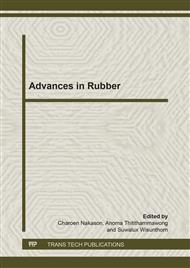[1]
M. I. Maksud, M. S. Yusof, and M. M. A. Jamil, Study on Finite Element Analysis of Fine Solid Lines by Flexographic Printing in Printed Antennas for RFID Transponder, International Journal of Integrated Engineering, vol. 4, no. 3, p.35–39, (2012).
Google Scholar
[2]
M. I. Maksud, M. S. Yusof, and M. M. A. Jamil, An Investigation into Printing Processes and Feasibility Study for RFID Tag Antennas, Applied Mechanics and Materials, vol. 315, p.468–471, Apr. (2013).
DOI: 10.4028/www.scientific.net/amm.315.468
Google Scholar
[3]
M. S. Yusof, Z. Said, and M. I. Maksud, Exploration of Fine Lines Profile Effects in Flexographic Printing, Applied Mechanics and Materials, vol. 315, p.458–462, Apr. (2013).
DOI: 10.4028/www.scientific.net/amm.315.458
Google Scholar
[4]
M. S. Yusof, T. C. Claypole, D. T. Gethin, and A. M. A. Zaidi, Application of Finite Elements on Non-Linear Deformation of Flexographic Photopolymer Printing Plate, vol. II, p.3–7, (2008).
Google Scholar
[5]
M. S. Yusof and D. T. Gethin, Investigation of Carbon Black Ink on Fine Solid Line Printing in Flexography, p.138–142.
Google Scholar
[6]
M. I. Maksud and M. S. Yusof, Cost Reduction Through Value Engineering Practices in Manufacturing Assembly, Applied Mechanics and Materials, vol. 315, p.503–506, Apr. (2013).
DOI: 10.4028/www.scientific.net/amm.315.503
Google Scholar
[7]
Y. Xia and G. M. Whitesides, Soft Lithography, Angewandte Chemie International Edition, vol. 37, no. 5, p.550–575, Mar. (1998).
DOI: 10.1002/(sici)1521-3773(19980316)37:5<550::aid-anie550>3.0.co;2-g
Google Scholar
[8]
D. Deganello, J. a. Cherry, D. T. Gethin, and T. C. Claypole, Impact of metered ink volume on reel-to-reel flexographic printed conductive networks for enhanced thin film conductivity, Thin Solid Films, vol. 520, no. 6, p.2233–2237, Jan. (2012).
DOI: 10.1016/j.tsf.2011.08.050
Google Scholar
[9]
B. E. D. Gilbert, F. Lee, B. E. D. Gilbert, and F. Lee, Flexographic Plate Technology : Conventional Solvent Plates versus Digital Solvent Plates Technology : Conventional Solvent Plates versus Digital Solvent Plates, Journal of Industrial Technology, vol. 24, no. 3, (2008).
Google Scholar
[10]
S. -W. Heo, K. -W. Song, M. -H. Choi, T. -H. Sung, and D. -K. Moon, Patternable solution process for fabrication of flexible polymer solar cells using PDMS, Solar Energy Materials and Solar Cells, vol. 95, no. 12, p.3564–3572, Dec. (2011).
DOI: 10.1016/j.solmat.2011.09.012
Google Scholar
[11]
M. S. Yusof, Printing Fine Solid Lines in Flexographic Printing Process Prifysgol Abertawe, College of Engineering, Swansea University, (2011).
Google Scholar
[12]
M. Tanaka, Y. Mabuchi, T. Hayashi, and M. Hara, Subtractive offset printing for fabrication of sub micrometer scale electrodes with gold nanoparticles, Microelectronic Engineering, vol. 95, p.14–20, Jul. (2012).
DOI: 10.1016/j.mee.2012.02.023
Google Scholar
[13]
S. Kim and H. J. Sung, Effect of nanostructured surfaces on conductive ink printing, p.1–4, (2012).
Google Scholar


